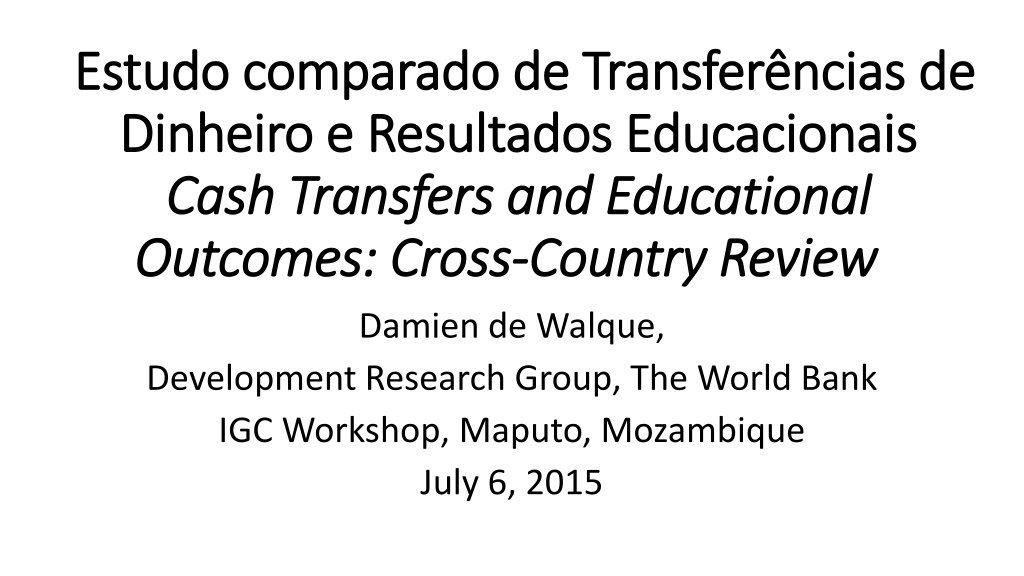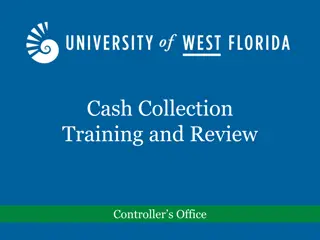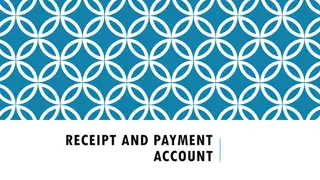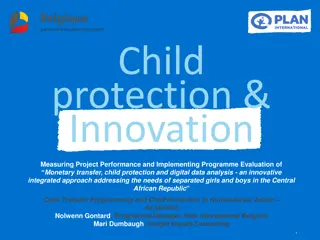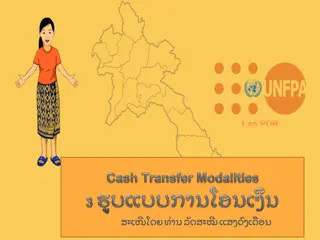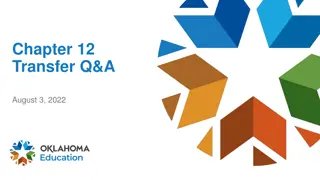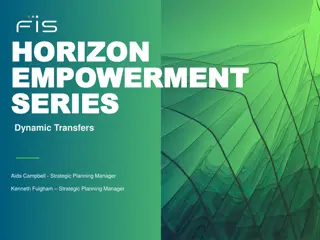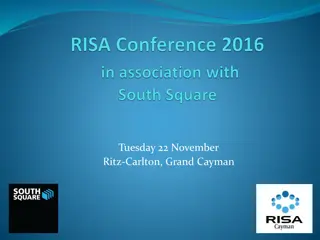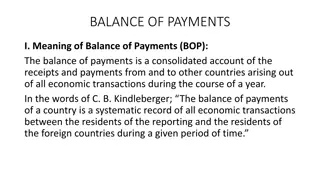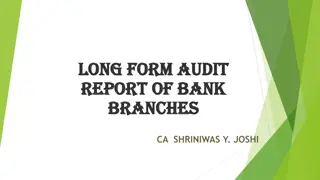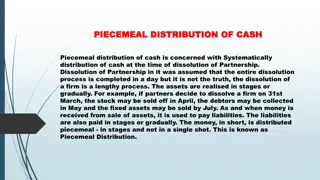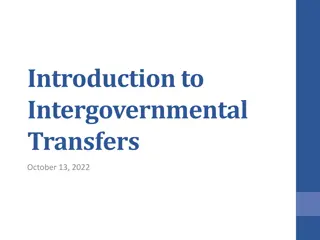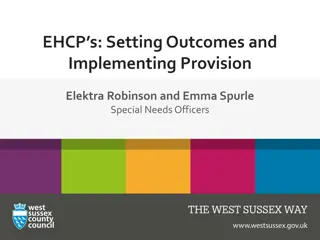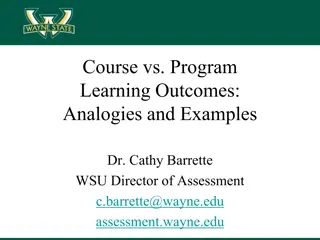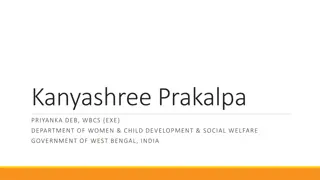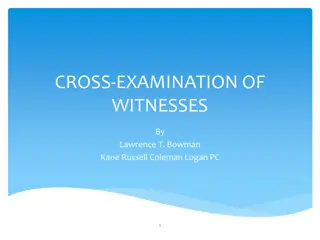Cash Transfers and Educational Outcomes: A Cross-Country Review
The study examines the impact of cash transfers on educational outcomes and economic growth, especially focusing on gender disparities in education in Mozambique. It highlights the importance of improving female education to achieve sustainable development goals. The use of Conditional Cash Transfer (CCT) programs as a policy tool to incentivize school enrollment and enhance human capital is discussed, emphasizing their role in reducing poverty and fostering development.
Download Presentation

Please find below an Image/Link to download the presentation.
The content on the website is provided AS IS for your information and personal use only. It may not be sold, licensed, or shared on other websites without obtaining consent from the author. Download presentation by click this link. If you encounter any issues during the download, it is possible that the publisher has removed the file from their server.
E N D
Presentation Transcript
Estudo comparado de Transferncias de Estudo comparado de Transfer ncias de Dinheiro e Resultados Educacionais Dinheiro e Resultados Educacionais Cash Transfers and Educational Cash Transfers and Educational Outcomes: Cross Outcomes: Cross- -Country Review Country Review Damien de Walque, Development Research Group, The World Bank IGC Workshop, Maputo, Mozambique July 6, 2015
The objective Incentivising school enrolment Economic Growth Improved Human Capital Education/Cognitive Skills Health Reduced Fertility
Improving female education Abu-Ghaida and Klasen (2004) estimate the effect on growth of failing to achieve the Millennium Development Goal of gender parity in education, country by country. Overall, they estimate that it would lead to a 0.1-0.3 percentage point lower growth rate per capita. In the case of Mozambique, they estimate that closing the education gap between males and females would increase the growth rate of GDP per capita by 0.3 percentage points.
Gender disparities in education in Mozambique
Gender disparities in education in Mozambique (2)
Gender disparities in education in Mozambique (3)
The policy tool: (Conditional) Cash Transfers Conditional cash transfer (CCT) programs have become one of the most popular social sector interventions in developing countries. A growing number of countries, in particular in Latin America, but also in Asia have implemented such programs. (Fiszbein and Schady 2009). In Africa, CCT programs have been implemented in several countries including South Africa, Kenya, Malawi, Burkina Faso and Morocco and some of them are currently evaluated.
Conditional cash transfers (CCT) While the program design details vary, all programs transfer resources to poor households conditional on the household taking active measures to increase the health and human capital of their children: Enrolling their children in school and maintaining their attendance, And/or taking them for regular health care visits.
Conditional vs. Unconditional Cash Transfers In making transfers conditional, this type of intervention seeks to encourage human capital accumulation and break a cycle in which poverty is transmitted across generations. While both CCT and unconditional cash transfer (UCT) programs attempt to provide poor households with a consumption floor, the CCT programs contrast with UCT programs, which do not impose conditionality constraints.
Both CCTs and UCTs have led to improvements in education outcomes Evidence of positive impacts of CCTs on education outcomes has been demonstrated in Mexico (Schultz 2004 ; Behrman, Sengupta and Todd 2005; de Janvry et al. 2006; and Attanasio, Meghir and Santiago, 2011), in Colombia (Attanasio et al. 2010); in Nicaragua (Maluccio and Flores 2005 and Macours, Schady and Vakis 2008), in Honduras (Glewwe and Olinto 2004); in Brazil (Glewwe and Kassouf 2012 and in Cambodia (Filmer and Schady 2011). UCT programs have also been shown to have a positive impact on education in Ecuador (Schady and Araujo 2008) and in South Africa (Case, Hosegood, and Lund 2005; Edmonds 2006). Impacts on enrolment and attendance stronger than impacts on cognitive achievements.
Comparing CCTs and UCTs In their systematic review, Baird et al. (2014) use data from 75 reports that cover 35 different studies, the authors find that both conditional cash transfers (CCTs) and unconditional cash transfers (UCTs) improve the odds of being enrolled in and attending school compared to no cash transfer program. The effect sizes for enrolment and attendance are always larger for CCTs compared to UCTs, although the difference is not statistically significant. When programs are categorized as having no schooling conditions, having some conditions with minimal monitoring and enforcement, and having explicit conditions that are monitored and enforced, a much clearer pattern emerges whereby programs that are explicitly conditional, monitor compliance and penalize non-compliance have substantively larger effects than unconditional transfers (60% improvement in odds of enrolment).
Comparing CCTs and UCTs (2) One experiment (Baird, McIntosh, and zler 2011) examines the impact of conditional and unconditional cash transfers on adolescent girls schooling and health outcomes in Malawi. This study concludes that for the schooling outcomes CCT outperformed UCT. Benhassine et al. (2014) use another randomized experiment in Morocco to estimate a labeled cash transfer (LCT) program: a small cash transfer made to fathers of school-aged children in poor rural communities, not conditional on school attendance but explicitly labeled as an education support program. They document large gains in school participation and conclude that adding conditionality and targeting mothers made almost no difference in that context.
Comparing CCTs and UCTs (3) Experiment in rural Burkina Faso (Akresh, de Walque and Kazianga, 2014) Marginal Child Hypothesis CCT most effective at getting parents to invest in children they normally would not Conditionality pushes parents to enroll the marginal child those not enrolled at baseline, girls, young children, low ability children CCT & UCT same impact for children enrolled at baseline, boys, older children, higher ability children
Role of the cash transfers recipient Numerous studies indicate that resources under the mother s control have a stronger positive impact on a child s health (and, in some cases schooling) than when those resources are controlled by the father. However, almost all current cash transfer programs give the resources to the mother. In the Burkina Faso study (Akresh, de Walque and Kazianga, 2015), the gender of the transfer s recipient is explicitly investigated.
Giving to mothers or fathers? While giving to mothers seems marginally better for education outcomes, the evidence is more mixed for health outcomes: giving the transfer to mothers leads to lower levels of C-reactive protein a biomarker whose values rise with inflammation in the body, but giving to fathers leads to better nutritional outcomes. Transfers given to fathers are also more likely to lead to more investment in the house s equipment (electricity and metal sheets) and in higher agricultural production especially for peanuts, the cash crop- and cattle ownership.
Giving to parents or adolescents? Parents and children s views on when it is optimal for a child to invest in human capital may not align. In addition, the actions of children are unlikely to be perfectly observed by their parents this potentially leads to a moral hazard problem which may prevent investments in schooling even when schooling would be optimal from the point of view of the parent-child pair under perfect information (Bursztyn and Coffman, 2012).
Giving to parents or adolescents? Bursztyn and Coffman (2012) show that parents attach a value to the monitoring of attendance provided by conditional cash transfers in the Brazilian context. But, Baird et al. (2011) obtain inconclusive results when comparing the effectiveness of one extra dollar given to children and that of an extra dollar given to parents in the context of joint transfers to parents and children in Malawi. Reporting on an experiment in India in 2007, Berry (2013) compares the effectiveness of transfers to children and to parents on test scores. The author finds that transfers to young children (toys) are more effective in raising scores for low-scoring children and that transfers to parents (money) are more effective in raising scores for high-scoring children
Impacts on health Mounting evidence shows both CCTs and UCTs also improve child health outcomes (for CCTs in Colombia (Attanasio, Gomez, Heredia, and Vera-Hernandez 2005), Ecuador (Paxson and Schady 2008), Nicaragua (Maluccio and Flores 2005; Macours, Schady, and Vakis 2008); and for UCTs in South Africa (Case and Deaton 1998; Case, Hosegood, and Lund 2005; Duflo 2003), but the evidence on which mechanisms conditionality or income effects- are playing a role in driving the impacts is more limited.
Impacts on health (2) In their review, Fernald, Gertler and Hidrobo (2012) conclude that studies show generally positive effects of CCT programs on several child health and development outcomes, including birth weight, illness or morbidity, and behavioral development. There were also some strong and significant effects of CCT participation on prenatal care, growth monitoring, micronutrient supplementation, and household food consumption.
Impacts on sexual and reproductive health Given that school enrolment may reduce the time available to individuals to engage in risky sexual behaviour, increase their perceived benefits of staying healthy and increase their knowledge of safe practices or ability to negotiate safe practices with their partner, social transfers that are conditional on school enrolment may indirectly improve reproductive health.
Impacts on sexual and reproductive health (2) In Malawi, for instance, Baird et al (2012) found that a cash transfer of on average $10 per household and month ($40 every 4 months), be it either unconditional or conditional on school attendance, had various impacts in reducing HIV and HSV-2 prevalence together with pregnancies and sexual relationships with men older than 25.
Conclusions The availability of extensive reliable evidence of the effectiveness of conditional transfers in education has contributed to making this type of social transfers one of the most popular policies for governments intent on raising enrolment throughout the developing world. Evidence on the effect of raising education, and, in particular, on the effect of raising female education, on economic growth, suggests that increasing the educational level of the (female) population would in turn lead to stronger economic growth. Additional benefits of conditional transfers in education in terms of health would also increase the welfare of the population, and possibly lead to further economic growth.
Conclusions (2) Mozambique has historically suffered from low levels of human capital. Despite progress made in recent years, only a minority of the population completes a full cycle of primary education, and this situation is especially concerning among girls in rural areas. The existing body of international evidence finding consistently positive effects of conditional transfers on enrolment in education across different settings suggests that this type of policy would also be effective in Mozambique.
